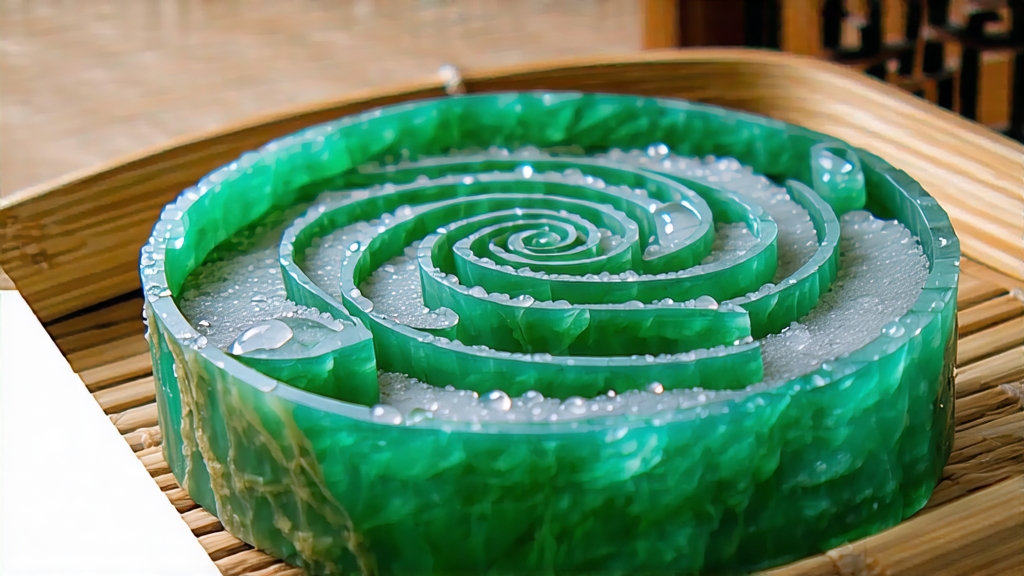
Biluochun, whose name translates literally to “Green Snail Spring,” is one of China’s ten most celebrated teas, yet it remains a quiet mystery outside the circles of serious tea lovers. Grown on the mist-lapped islands and peninsulas of East China’s Taihu Lake, this emerald-green tea is prized for its improbably tiny spiral shape, downy silver tips, and a fragrance so delicate that locals once called it “scary fragrance” (xia sha xiang) because its floral intensity seemed almost supernatural. To understand Biluochun is to step into a 1,200-year-old story of emperors, poets, monks, and the cool lake micro-climates that conspire each April to coax the sweetest aromatics from the smallest buds in the tea world.
Historical whispers place Biluochun’s birth during the Tang dynasty, but its apotheosis arrived in the late Kangxi period of the Qing. Legend claims a tea picker, startled by the sudden reek of an animal in the underbrush, jammed her half-filled basket against a flowering apricot tree. Overnight the buds absorbed the perfume of fallen petals; when the local monk brewed them the next morning, the infusion tasted of spring itself. The emperor, traveling incognito, tasted the tea, renamed it Biluochun for its snail-shell curl, and elevated it to tribute status. Whether myth or marketing, the story captures the tea’s essential romance: it is impossible to separate leaf from landscape, aroma from season.
Strictly speaking, only leaf plucked within the Dongting Mountain enclave of Suzhou’s Wuzhong district qualifies as authentic Biluochun. Even here, terroir is parsed into micro-parcels: the highest grade emerges from rocky, moss-covered slopes on Dongshan and Xishan islands where lake mist slows photosynthesis, concentrating amino acids that translate into sweetness. Lower-elevation gardens on the adjacent mainland produce perfectly pleasant tea, but connoisseurs chase the island core, known as “true mountain” leaf, identifiable by its shorter, plumper curl and a silvery down that looks like frost in dawn light.
Plucking begins when the meteorological calendar declares “spring has arrived,” usually between Grain Rain and Qingming, when each bush offers only a single tender bud flanked by an unfolding leaf the size of a sparrow’s tongue. Experienced pickers work counter-clockwise around the bush, snapping rather than pinching to avoid bruise marks that would oxidize into red edges. The daily harvest must reach the village workshop before noon; any delay allows ambient enzymes to awaken, flattening the vivid green that defines the style.
Withering is skipped entirely; instead, the fresh leaf is spread thinly on woven bamboo sieves and allowed to breathe for thirty minutes while the firing woks reach 180 °C. The master’s first move, “killing the green,” lasts less than four minutes: hands flutter through the searing metal like hummingbirds, tossing the leaf high so cooler air slips between the curls. Temperature drops to 80 °C for the second stage, “rubbing and rolling,” when the maker presses palm against leaf, tracing tiny clockwise spirals that train each bud into its signature shell shape. A final low-heat drying, called “lifting the aroma,” coaxes moisture down to 6 % while locking in the tea’s orchid note. Throughout, the craftsman gauges readiness not by timer but by scent: first grassy, then pea-like, finally the elusive apricot-lily perfume that signals completion.
Western drinkers often brew green teas with boiling water and then wonder why the cup tastes of cooked spinach. Biluochun demands the opposite: respect its delicacy and it will repay you with layers that oscillate between white peach and vanilla bean. Use 3 g of leaf—about a level teaspoon—for every 150 ml of water cooled to 75 °C. A tall, thin glass is traditional in Suzhou teahouses because it allows you to watch the spirals unfurl like green fireworks, sinking, rising, then settling into a verdure forest on the floor. Infuse for forty-five seconds; subsequent steeps add five seconds. Stop when the buds, now fully open, lose their iridescent sheen, usually around the fifth infusion.
Professional cupping follows a tighter script. Five grams are placed in a 110 ml porcelain gaiwan; water at 80 °C is poured to the rim, lid clamped, and the liquor poured off after thirty seconds. The first assessment is aroma: tilt the lid and inhale—top notes should recall fresh lychee, middle notes steamed edamame